Key takeaways:
- Street photography captures candid moments in public spaces, showcasing the authenticity of human experiences.
- It serves as a historical record, preserving societal dynamics and evoking empathy through shared narratives.
- Essential equipment includes a lightweight camera, fast prime lenses, and a compact tripod for versatility and creativity.
- Successful candid photography relies on observation, mastering natural light, and connecting with subjects through subtle interactions.
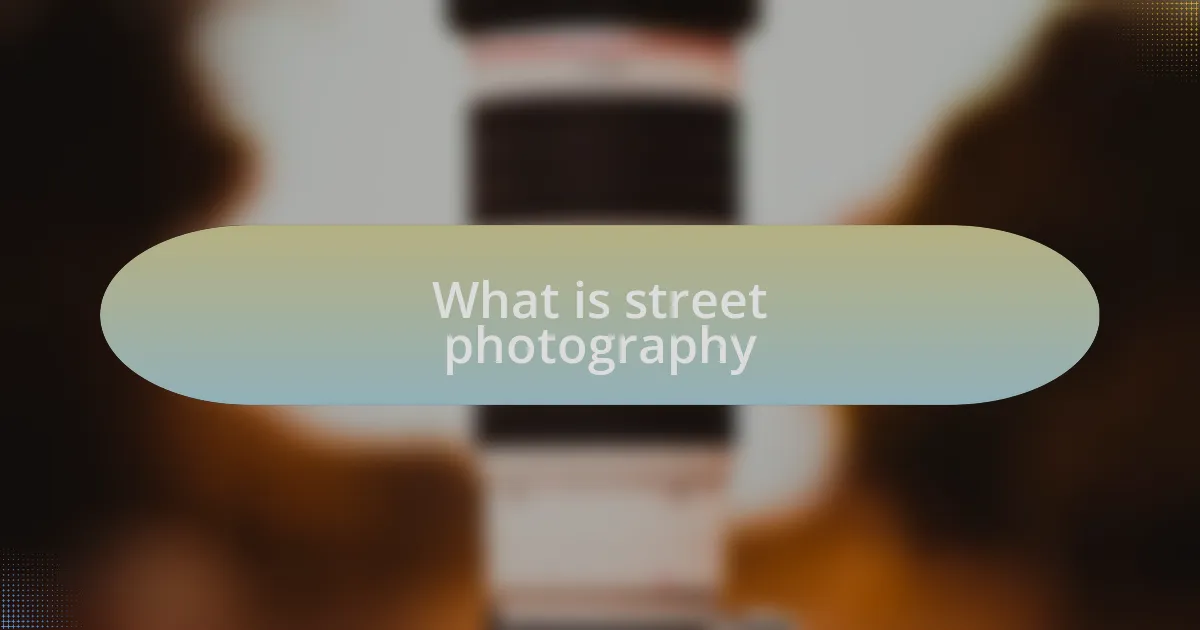
What is street photography
Street photography is a captivating genre that captures candid moments in public spaces, reflecting the raw essence of life. I remember one afternoon, camera in hand, I witnessed a child’s innocent laughter as it erupted on a bustling city street. This moment not only highlighted the joy of childhood but also reminded me of the beauty found in everyday interactions.
When I think about street photography, I often wonder: what story does a fleeting moment tell? Each click of the shutter has the potential to freeze a narrative, eliciting emotions and connections for viewers who weren’t present. This unique aspect creates a powerful bond between the photographer and the audience, as we share in the spontaneity and authenticity of life as it unfolds.
In essence, street photography thrives on spontaneity, requiring the photographer to be both observant and prepared. It’s exhilarating yet challenging to anticipate moments that might last only a heartbeat. I’ve found that the best photographs often emerge when you least expect them, turning ordinary scenes into extraordinary stories.
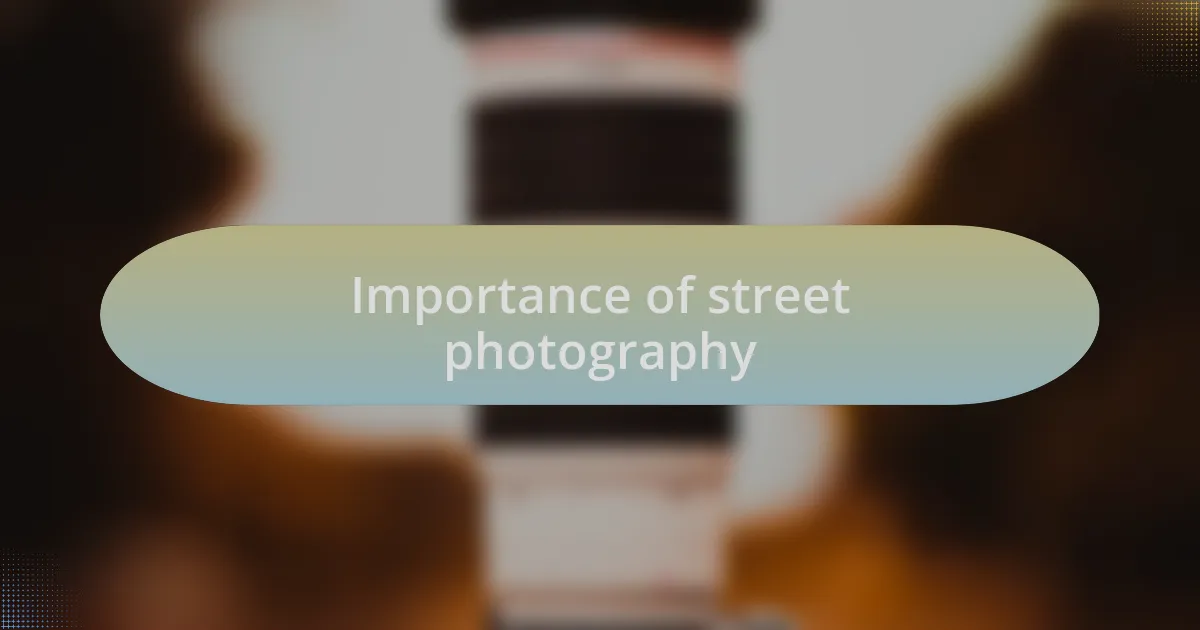
Importance of street photography
The importance of street photography lies in its ability to document our environment and the diverse tapestry of human experiences. I recall a chilly morning when I captured an elderly man feeding pigeons in the park, a simple yet profound act. It struck me that this scene, while seemingly mundane, speaks volumes about companionship and our connection to nature, giving viewers a glimpse into a world often overlooked.
Moreover, street photography serves as a historical record of society, capturing moments that may fade with time. When I look back at my own portfolio, I can see how the dynamics of my city have evolved. Each photo not only tells a story but also preserves a snapshot of culture and life at that particular moment, making it invaluable for future generations. Isn’t it fascinating how a single image can evoke memories and provoke thoughts about our social landscape?
Lastly, practicing street photography can foster a deep sense of empathy and awareness. I remember feeling a rush of emotions when I photographed a couple sharing a tender moment amid the chaotic streets. This experience taught me to view life through a different lens, acknowledging the shared struggles and joys of our fellow humans. How often do we stop to appreciate the stories around us? Through street photography, I’ve learned to cherish those fleeting instances and recognize the beauty in everyday life.
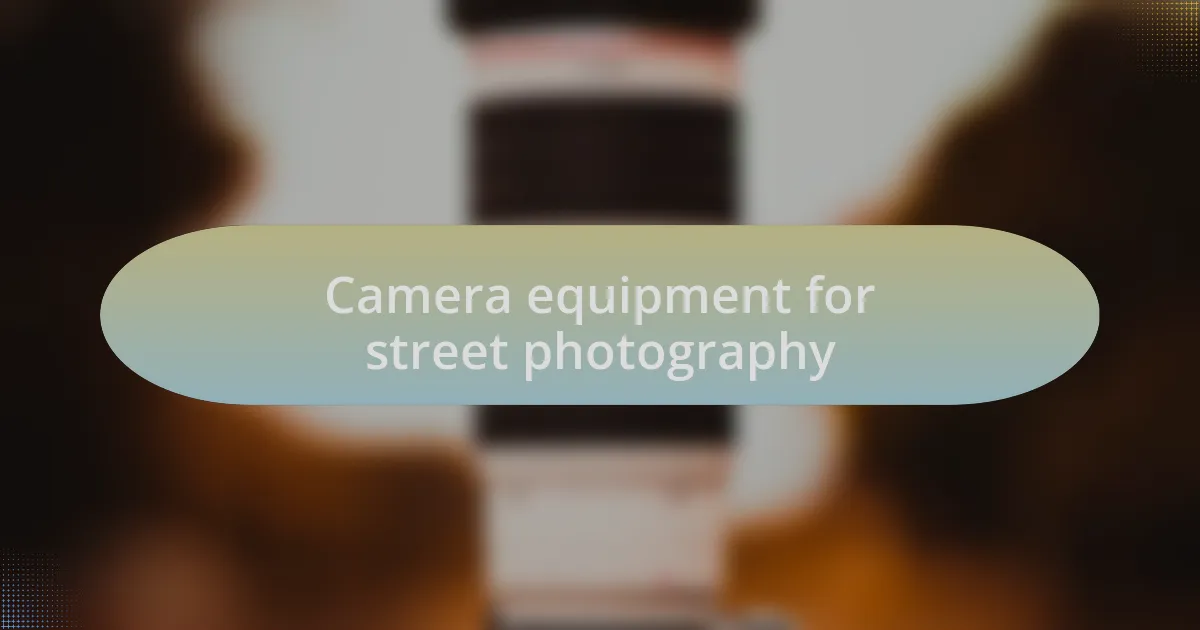
Camera equipment for street photography
When it comes to camera equipment for street photography, the choice can greatly affect the experience and outcome. Personally, I prefer a lightweight mirrorless camera for its portability, which allows me to blend in with my surroundings. Have you ever found yourself lugging around a heavy DSLR only to miss that perfect moment? I’ve been there, and I’ve discovered that being nimble often leads to capturing spontaneous and authentic shots.
Lenses also play a crucial role; I tend to gravitate toward a fast prime lens, like a 35mm or 50mm. These lenses allow for great depth of field and low-light performance, enabling me to explore the urban landscape even during twilight. I vividly remember one evening, a vibrant sunset cast golden hues over bustling streets, and my 50mm lens helped me seize that fleeting light beautifully. Why settle for a blurry shot when you can elevate your photography with the right glass?
Lastly, an essential piece of equipment that I wouldn’t trade for anything is a sturdy but compact tripod. While street photography often involves capturing candid moments, I’ve found that having a tripod for long exposures can unlock new creative avenues. I once experimented with light trails created by passing cars in an urban setting, and the results were stunning, revealing the energy of the city in a whole new light. How do you push the boundaries of your street photography technique?
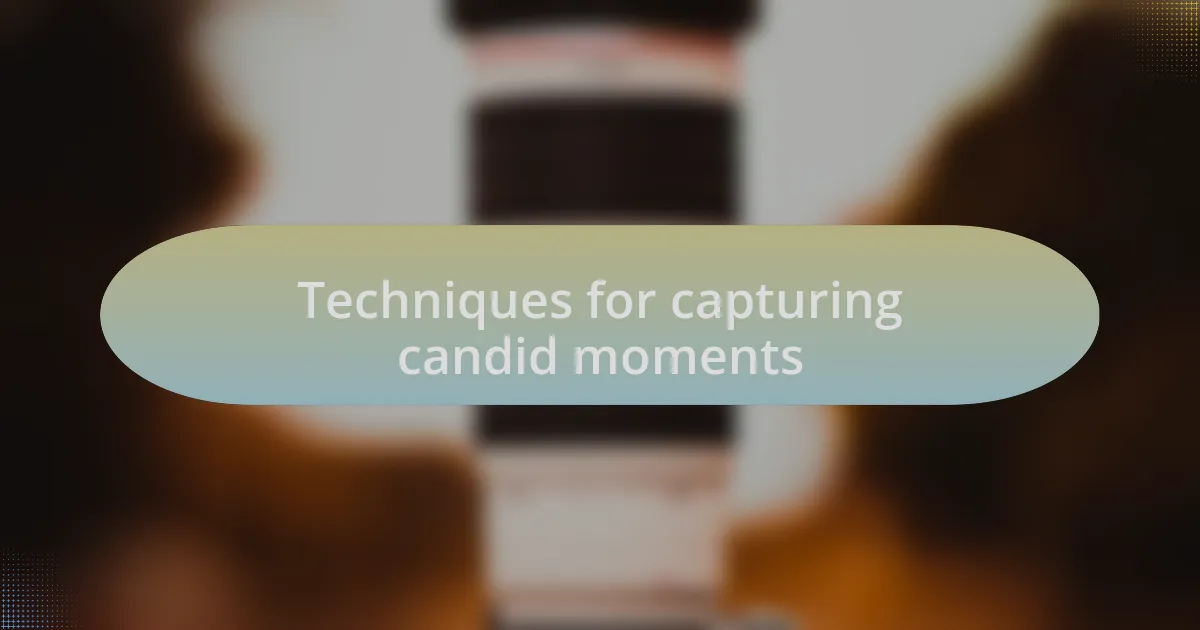
Techniques for capturing candid moments
Candid moments often happen in the blink of an eye, and I’ve found that predicting these instances can significantly improve my street photography. One technique I rely on is being observant and anticipating human interactions. For instance, I once noticed a group of friends laughing together just before they shared a heartfelt hug; by being ready and framing the scene ahead of time, I captured the raw emotion of that moment beautifully. It makes me wonder, how often do we miss these connections because we’re not watching closely enough?
Another effective method is mastering the use of natural light. I recall a day spent photographing street performances, and instead of waiting for the perfect sunny day, I embraced the overcast sky. The soft light allowed me to capture the performers’ expressions without harsh shadows, revealing their intensity and passion. Have you ever experimented with different lighting conditions? Trust me; the results can be surprisingly impactful.
Lastly, I’ve learned the art of patience and subtlety. Instead of immediately raising my camera, I often take a moment to blend into the background—like a silent observer. This approach led me to capture an older man feeding pigeons, completely absorbed in his own world. The candid nature of the shot felt so genuine that I still cherish it today. How much more could we uncover by simply allowing life to unfold around us without intrusion?
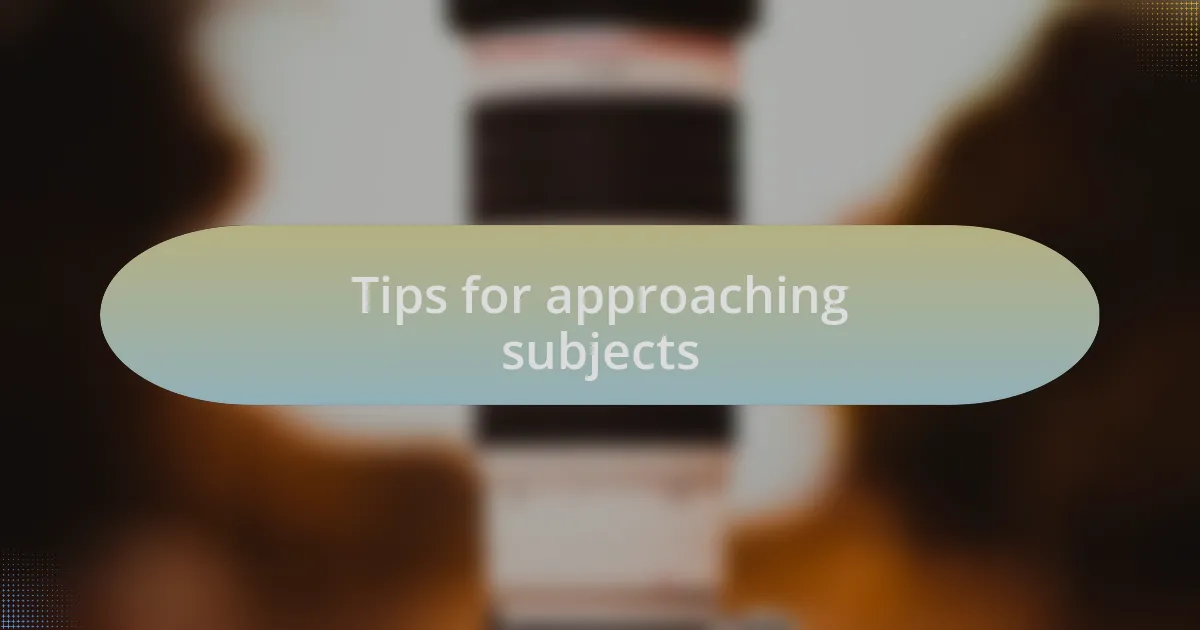
Tips for approaching subjects
When approaching subjects in street photography, the key is to establish a connection, even if it’s subtle. I’ve found that a simple smile or nod can open up a world of willingness in a person. One particular afternoon, I made eye contact with a young artist engrossed in her painting. Instead of just snapping a picture, I gestured to her artwork, and she smiled, allowing me to capture her joy and pride in creating. Isn’t it fascinating how a small interaction can transform a photograph?
Another crucial tip is to embrace your surroundings. Sometimes, I like to position myself near a bustling market or a quaint café, where people naturally gather and interact. I remember a time when I set up close to a group of street musicians; their energy was contagious. By immersing myself in the environment, I was able to capture not just the musicians but also the audience’s reactions—laughter, claps, and even a few spontaneous dance moves. Have you ever noticed how life unfolds in these vibrant settings?
Finally, timing is everything. I’ve learned to trust my instincts about when to click the shutter. There was a moment when I was watching a woman help a child with balloon animals. As she leaned down, the child’s eyes lit up with wonder. I pressed the shutter just as their eyes met, freezing that joyous spark in time. How often do we hesitate, only to realize we’ve missed the perfect shot? Embrace the moment and let your intuition guide you.